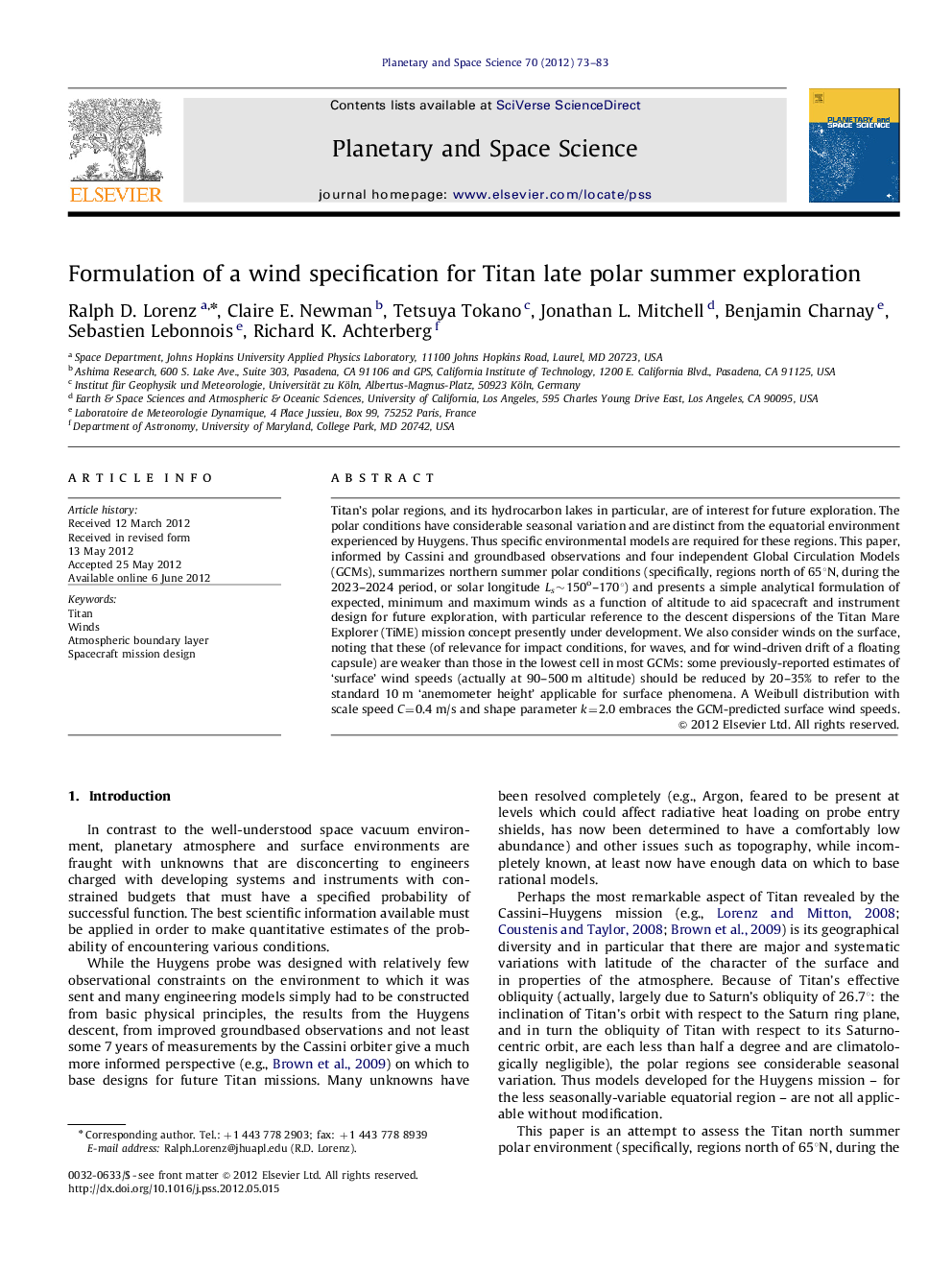| Article ID | Journal | Published Year | Pages | File Type |
|---|---|---|---|---|
| 1781419 | Planetary and Space Science | 2012 | 11 Pages |
Titan’s polar regions, and its hydrocarbon lakes in particular, are of interest for future exploration. The polar conditions have considerable seasonal variation and are distinct from the equatorial environment experienced by Huygens. Thus specific environmental models are required for these regions. This paper, informed by Cassini and groundbased observations and four independent Global Circulation Models (GCMs), summarizes northern summer polar conditions (specifically, regions north of 65°N, during the 2023–2024 period, or solar longitude Ls∼150o–170°) and presents a simple analytical formulation of expected, minimum and maximum winds as a function of altitude to aid spacecraft and instrument design for future exploration, with particular reference to the descent dispersions of the Titan Mare Explorer (TiME) mission concept presently under development. We also consider winds on the surface, noting that these (of relevance for impact conditions, for waves, and for wind-driven drift of a floating capsule) are weaker than those in the lowest cell in most GCMs: some previously-reported estimates of ‘surface’ wind speeds (actually at 90–500 m altitude) should be reduced by 20–35% to refer to the standard 10 m ‘anemometer height’ applicable for surface phenomena. A Weibull distribution with scale speed C=0.4 m/s and shape parameter k=2.0 embraces the GCM-predicted surface wind speeds.
► Reviews historical wind model development for design of Mars and Titan spacecraft missions. ► Compiles observational data and Global Circulation Model output for Titan polar summer winds. ► Provides simple analytic expression for max/min and expected winds with altitude for Titan Mare Explorer (TiME) mission in 2023. ► Reviews near-surface wind probability distributions and boundary layer corrections.
